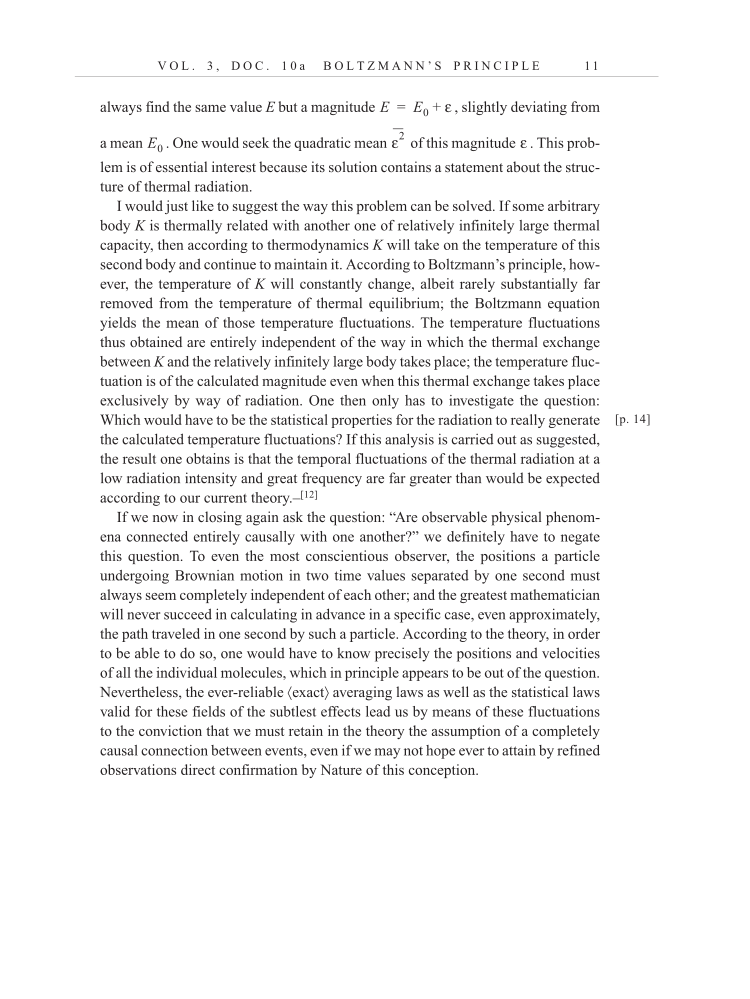V O L . 3 , D O C . 1 0 a B O L T Z M A N N ’ S P R I N C I P L E 1 1 always find the same value E but a magnitude , slightly deviating from a mean . One would seek the quadratic mean of this magnitude . This prob- lem is of essential interest because its solution contains a statement about the struc- ture of thermal radiation. I would just like to suggest the way this problem can be solved. If some arbitrary body K is thermally related with another one of relatively infinitely large thermal capacity, then according to thermodynamics K will take on the temperature of this second body and continue to maintain it. According to Boltzmann’s principle, how- ever, the temperature of K will constantly change, albeit rarely substantially far removed from the temperature of thermal equilibrium the Boltzmann equation yields the mean of those temperature fluctuations. The temperature fluctuations thus obtained are entirely independent of the way in which the thermal exchange between K and the relatively infinitely large body takes place the temperature fluc- tuation is of the calculated magnitude even when this thermal exchange takes place exclusively by way of radiation. One then only has to investigate the question: Which would have to be the statistical properties for the radiation to really generate the calculated temperature fluctuations? If this analysis is carried out as suggested, the result one obtains is that the temporal fluctuations of the thermal radiation at a low radiation intensity and great frequency are far greater than would be expected according to our current theory.–[12] If we now in closing again ask the question: “Are observable physical phenom- ena connected entirely causally with one another?” we definitely have to negate this question. To even the most conscientious observer, the positions a particle undergoing Brownian motion in two time values separated by one second must always seem completely independent of each other and the greatest mathematician will never succeed in calculating in advance in a specific case, even approximately, the path traveled in one second by such a particle. According to the theory, in order to be able to do so, one would have to know precisely the positions and velocities of all the individual molecules, which in principle appears to be out of the question. Nevertheless, the ever-reliable exact averaging laws as well as the statistical laws valid for these fields of the subtlest effects lead us by means of these fluctuations to the conviction that we must retain in the theory the assumption of a completely causal connection between events, even if we may not hope ever to attain by refined observations direct confirmation by Nature of this conception. E E0 ε += E0 ε2 ε [p. 14]
